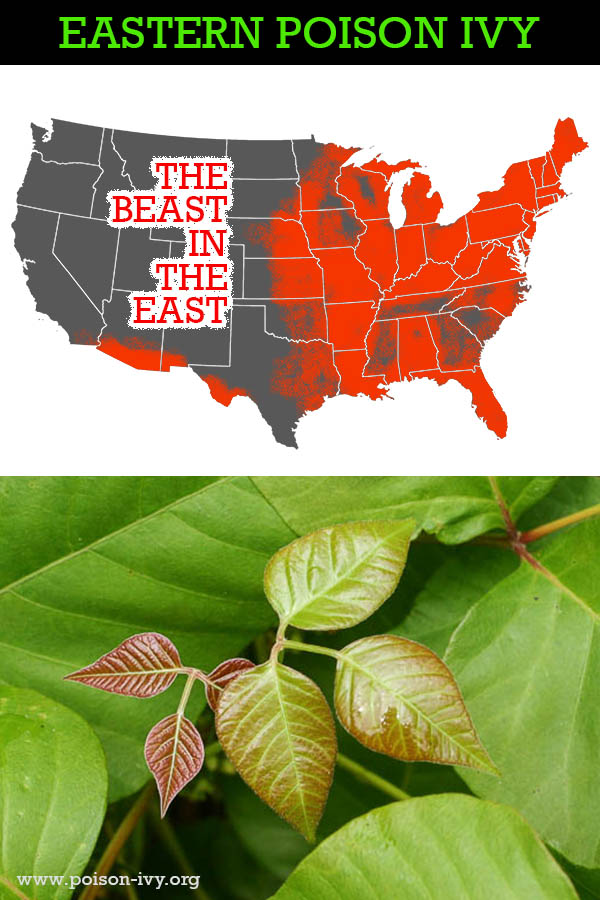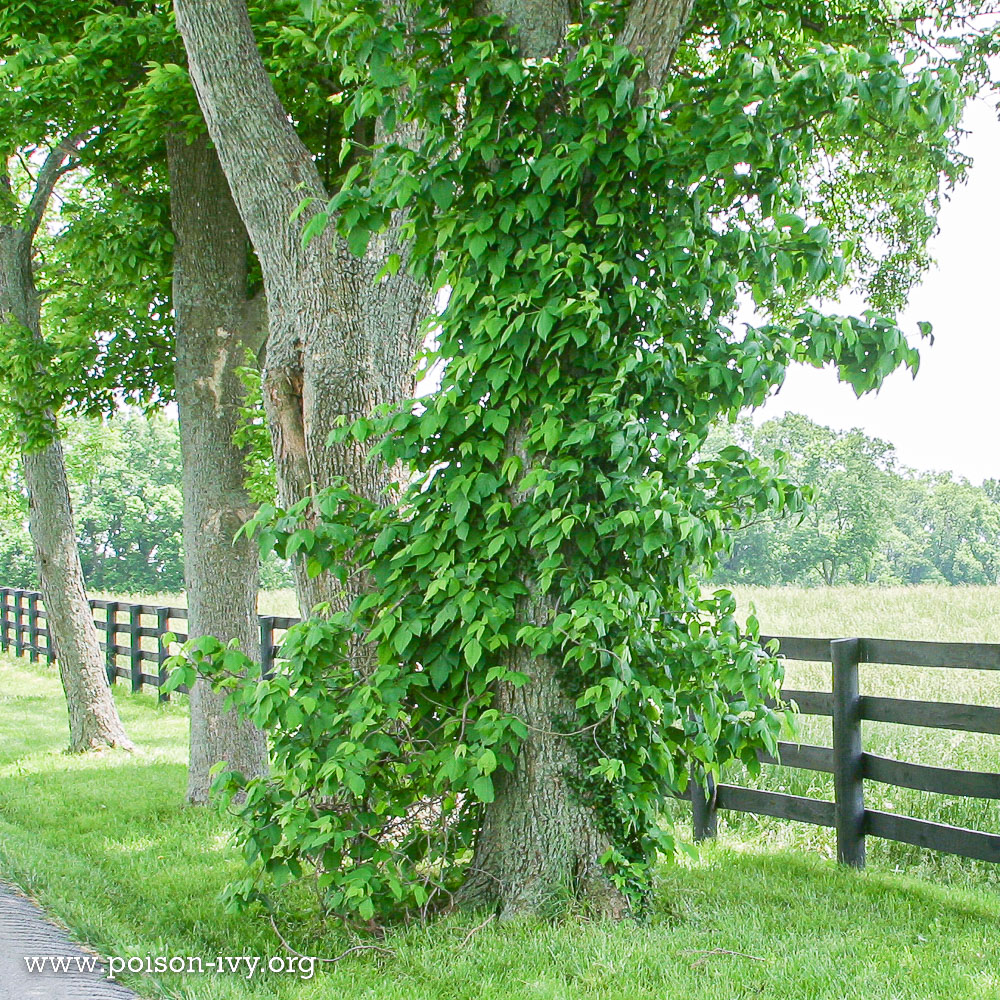
Poison Ivy as a Climbing Vine
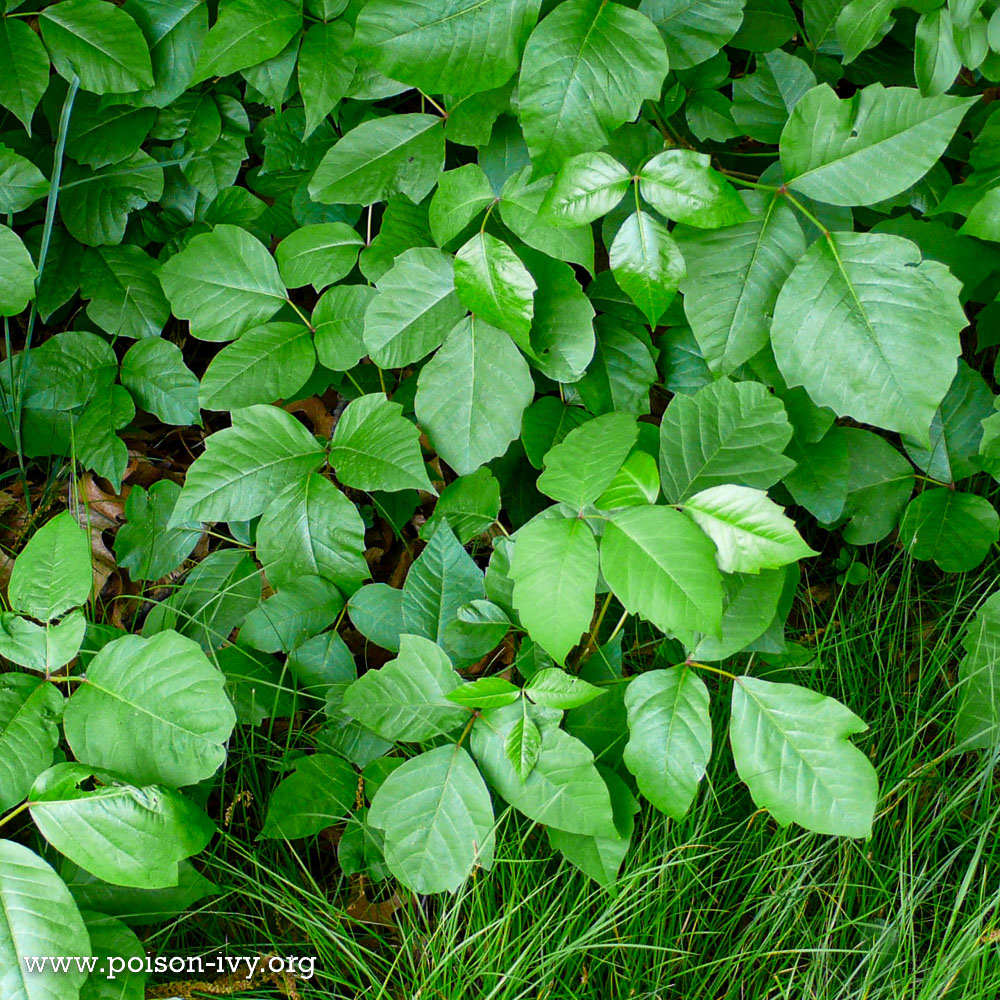
Poison Ivy as a Ground Cover Vine
Remember that poison ivy grows as a ground vine – if it can’t find anything to climb on – and it will cover huge areas as a ground cover.
When it finds anything to climb on the roots become the reddish root hairs that hold onto vertical surfaces.
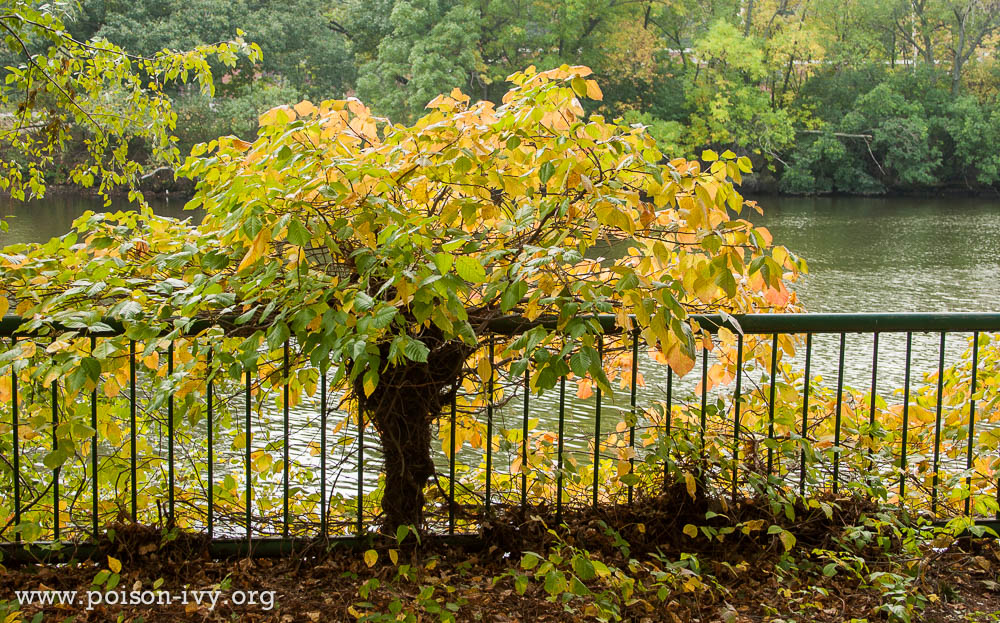
Poison Ivy Shrub
It is critical to realize that poison can form into an impressive shrub, sometimes growing off of post or a stump, but even on its own right from the ground.
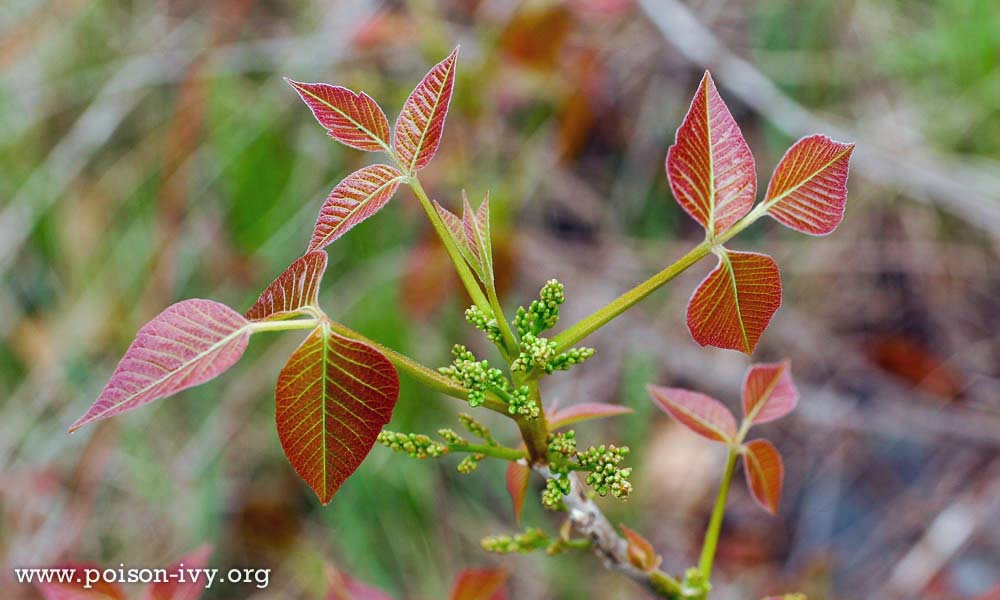
Poison Ivy in Spring
Poison ivy in spring usually has reddish leaves (like many plants in spring). Here we see the flower buds ready to bloom just as the leaves come out.
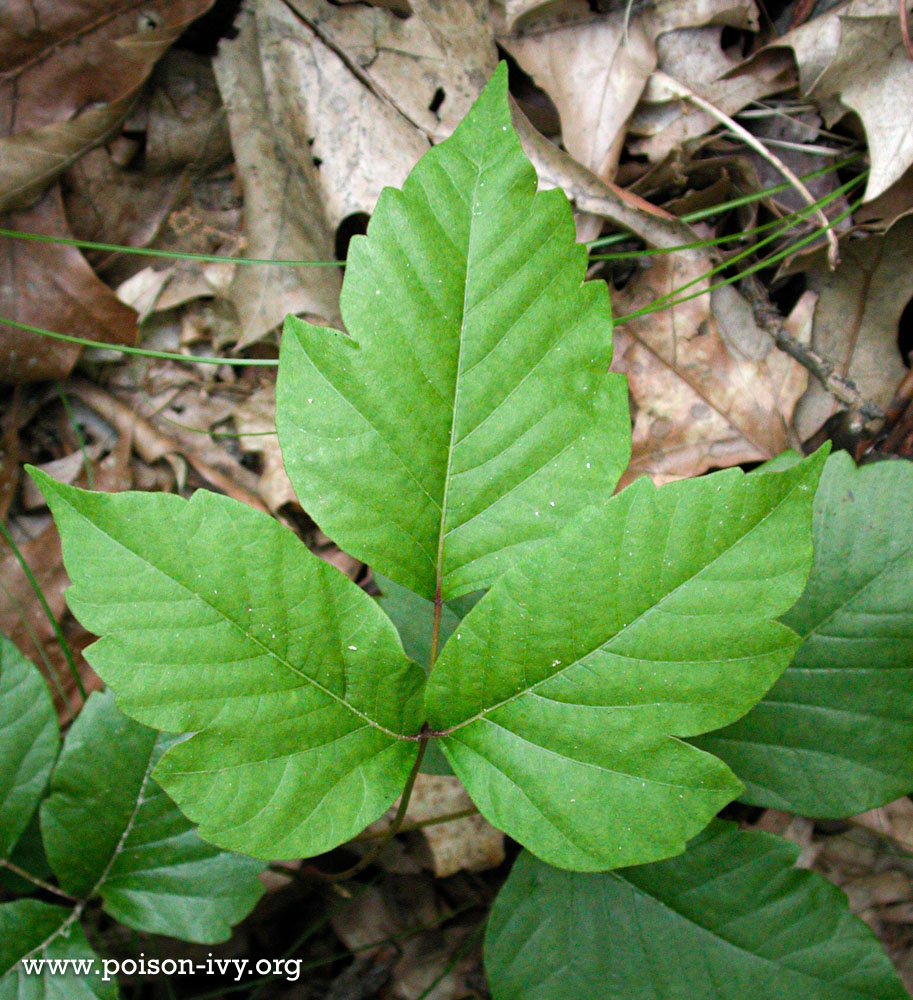
Poison Ivy in Summer
Poison ivy in summer, showing some very typical features: notches on the leaf edges; side leaves with big bottom “thumbs”; center leaf on longer stalk.

Poison Ivy Berries
Poison ivy blooms in early spring and then grows berries about the size of peppercorns. They turn white in the fall and provide food for birds.
Of course, people should NOT eat poison ivy berries!
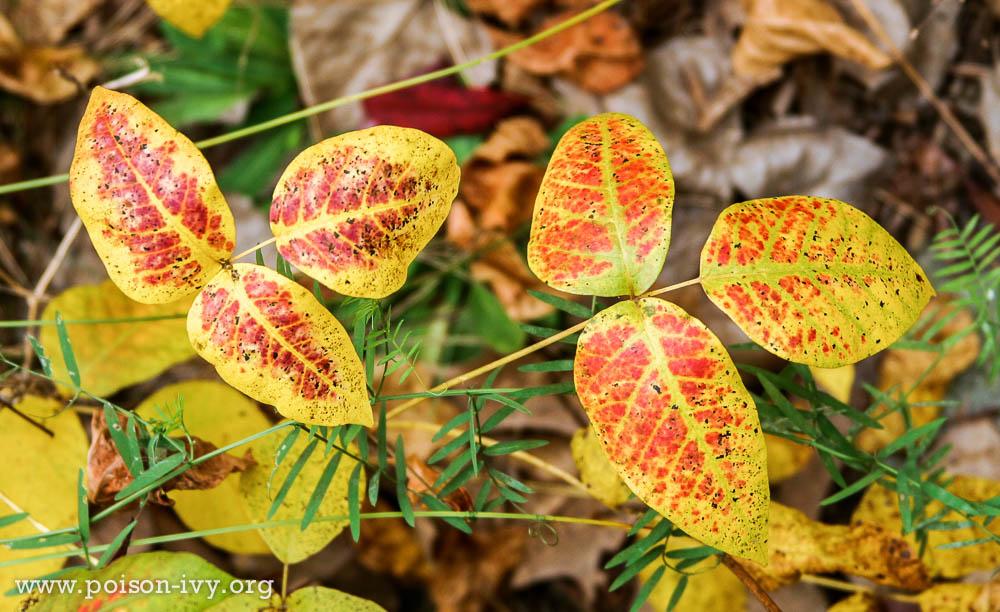
Poison Ivy in the Fall
Poison ivy in the fall can have some of the most beautifully colored leaves, which often gets people in trouble when they are looking for festive fall decor.
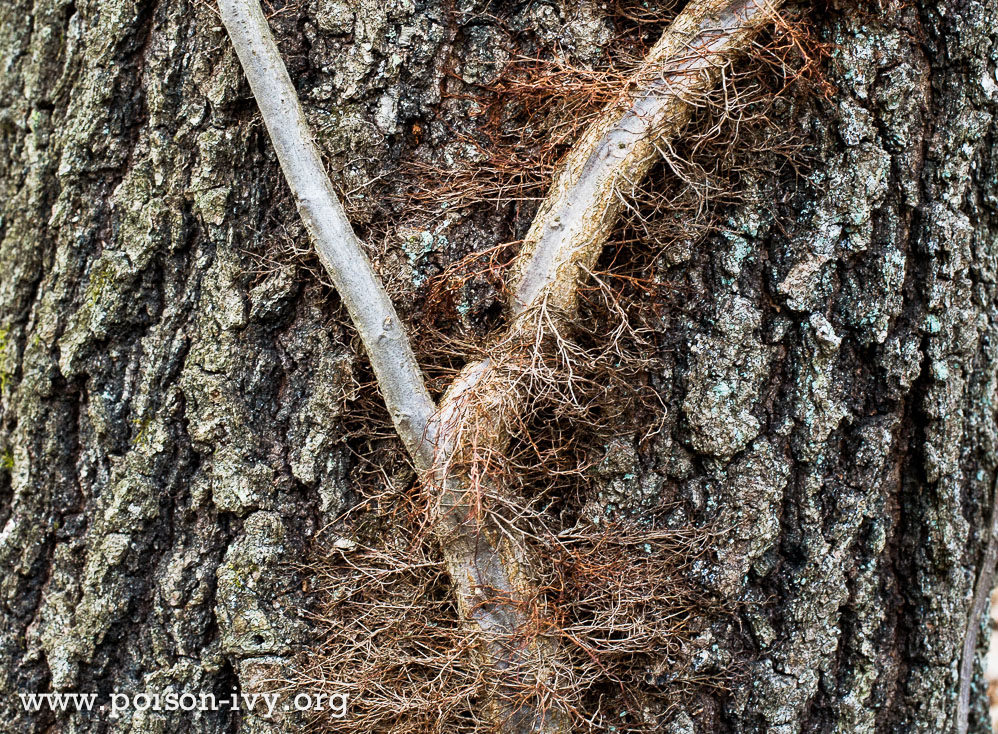
Poison Ivy in Winter
When the leaves are gone it can be very difficult to spot poison ivy. If it is a climbing vine it will almost always have distinct hairy roots that attached it to trees or walls. But if it is a ground vine it is nearly impossible to spot in winter.
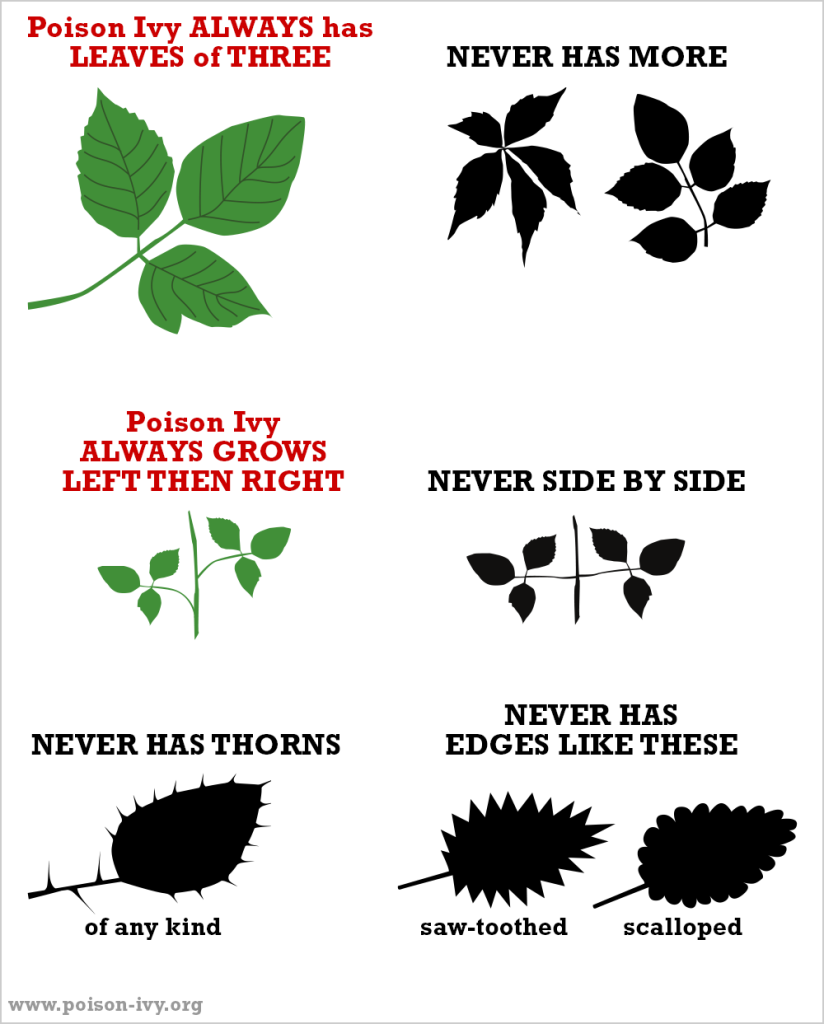
Always - Never
Here is your basic chart of things you CAN count on with poison ivy:
Poison ivy plants have three leaflets, almost never ever more than three.
Poison ivy leaves grow out of the stem taking turns, not right across from each other.
Poison ivy never ever has thorns and never has neatly saw-toothed or scalloped leaf edges.
